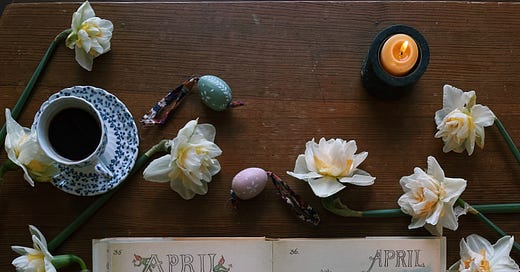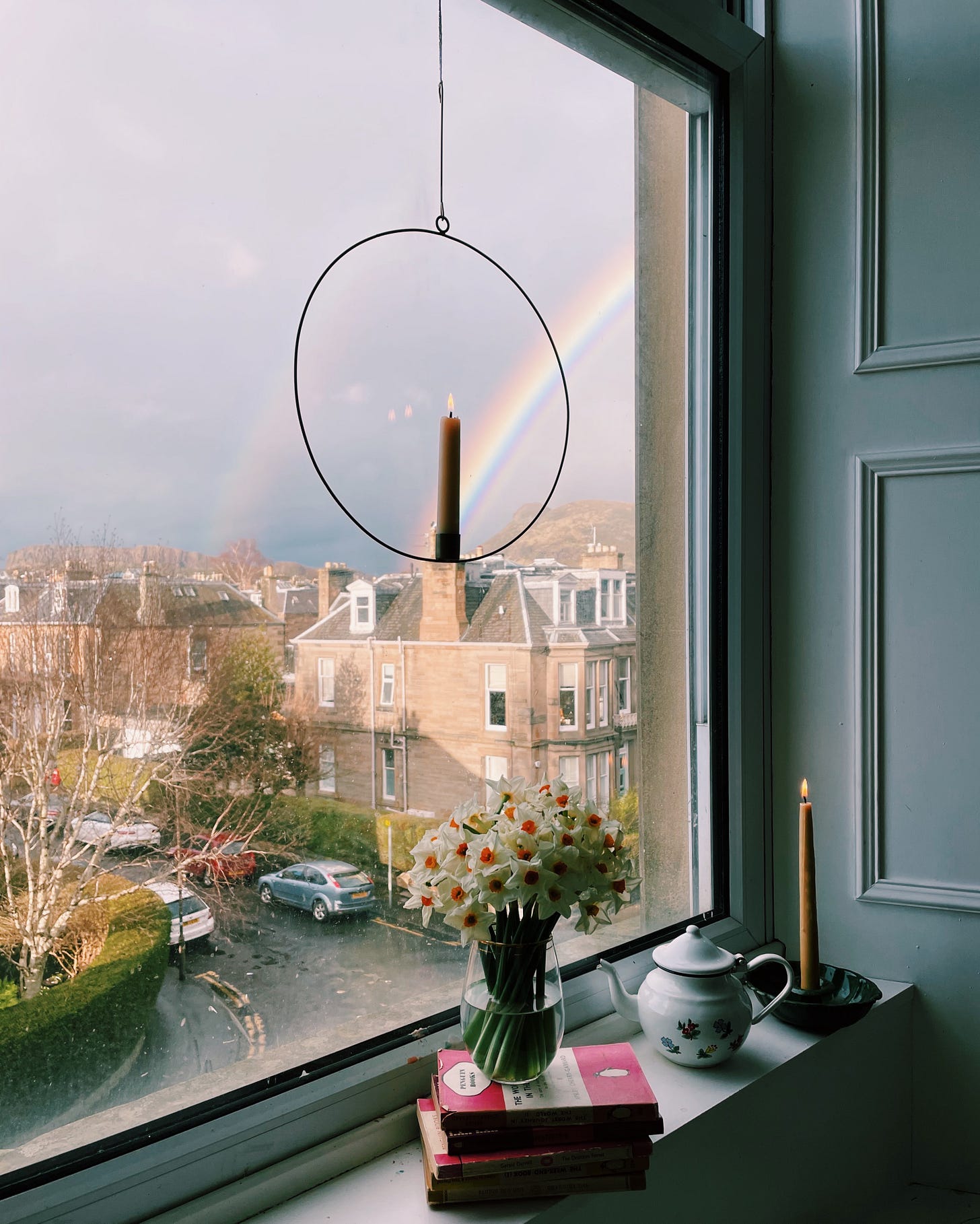“At Beltane, quhen ilk bodie bownis
To Peblis to the Play,
To heir the singin and the soundis;
The solace, suth to say,
Be firth and forrest furth they found
Thay graythis tham full gay;
God wait that wald they do that stound,
For it was their feast day the day they celebrate May Day”
(‘Peblis to the Play’, The Maitland Manuscripts, fifteenth and sixteenth Century Scots poetry)
Once Ostara and the Vernal Equinox have passed, the light builds momentum day after day. This is truly the height of Spring and, as the Earth tilts closer and closer towards the sun, we begin the ascendance towards Summer. Beltane, on the 1st May, is the halfway point between the Spring Equinox and Summer Solstice and is a time associated with light, fire and fertility – not only of the body but also mind and spirit, including creativity. The name comes from the Gaelic for ‘fires of Bel’ (a Celtic God) and celebrates the coming of Summer; the beginning of the farming calendar as a time of hope and community excitement.
Many of the rituals of Beltane involve fire, particularly evening bonfires, thought to bring purity and fertility. People would jump over the Beltane fire for good luck and future happiness. Today, the biggest Beltane celebrations in the UK are in Edinburgh on 30th April, with bonfires lit in the evening and burning until dawn on Calton Hill. At the University of St Andrews, my alma mater, students gather on East Sands (formerly Castle Sands) and run into the North Sea at dawn on May Day, viewed as ‘cleansing’ you of academic sins. I’ve never been so cold in my life, but taking part in ‘The May Dip’ is still one of the most invigorating and joyful experiences of my life.
In the Celtic Wheel, Beltane is regarded as the beginning of the Summer season, and it certainly feels that way to me: growing up, May was the month of exams (now a month of marking as a teacher!) and my Dad’s birthday is at the end of the month so it seemed to mark the start of the season’s celebrations and the countdown to freedom (the school holidays start in June here).
Versions of the ancient festival are marked by many European cultures with traditions involving dancing, singing and cake. In England, May Day involves crowning a May Queen and dancing round the maypole with ribbons. A favourite May Day tradition of mine is the ritual of leaving a small posy of flowers on the doorstep of friends and neighbours to celebrate Spring, and has witnessed a delightful resurgence recently.
Nature is celebrating light as well: this six week period is particularly flower-packed. Blossom is bursting into life, with the cherry blossom bringing cheer to my daily walk to work. Visit the countryside at this time and you will find the hedgerow is awash with white, as hawthorn – or aptly named May blossom – and cow parsley vie for attention, lining fields and roadsides. In the garden, the delicate blooms of lilac and sweet lily of the valley are all the more precious for their fleeting beauty. Their scent alone is evocative of a Spring day; bringing in a posy of these ephemeral flowers is Spring joy distilled.
For me, much of the joy is also to be found in anticipation, too: Summer beckons, just around the corner. This is the true start of the horticultural and farming year, and I’ll be marking Beltane over the next few weeks in my twice-weekly newsletters filled with things to make, do and celebrate at this time of year.







I love this season so much... And yet every year it is such a rush (I am a school teacher as well) I feel I hardly enjoy it enough. I am definitely going to try and slow down a bit this year and appreciate those little moments.
🌹🌹🌹🌹🌹